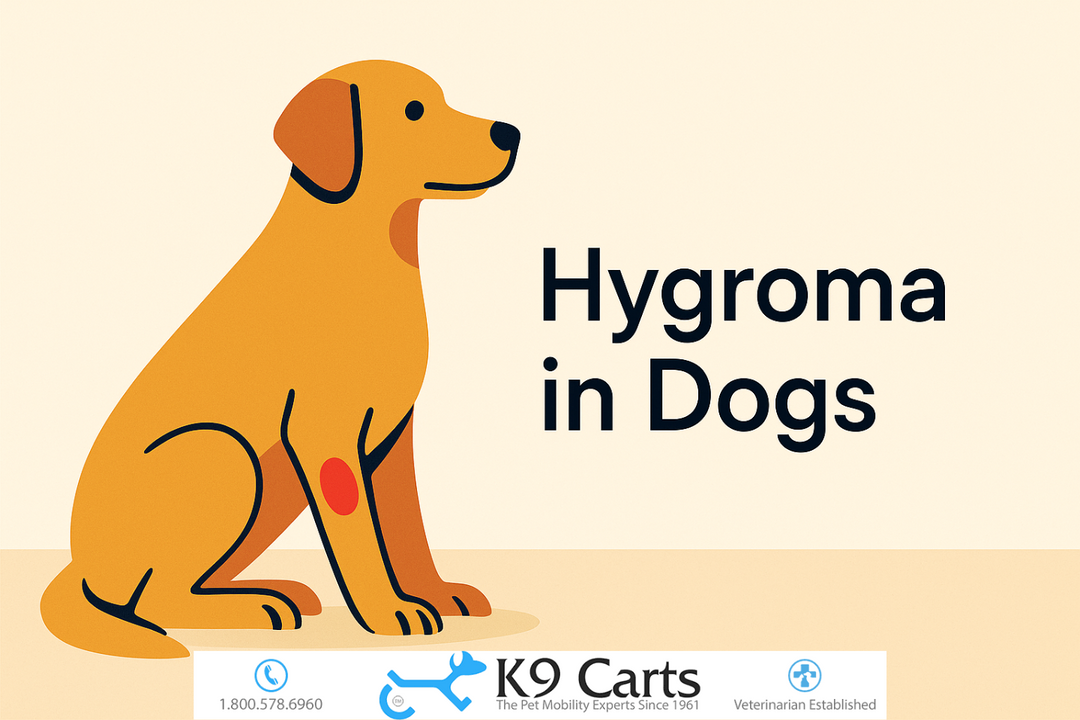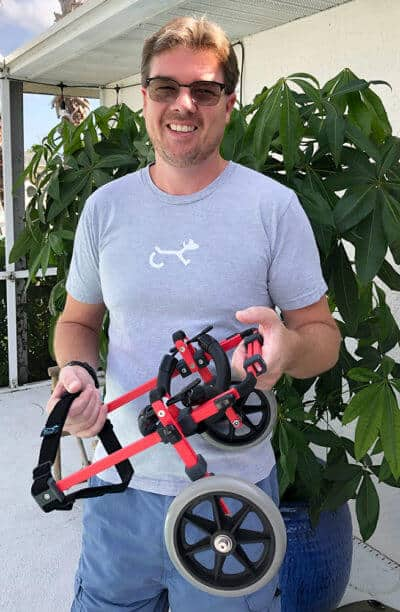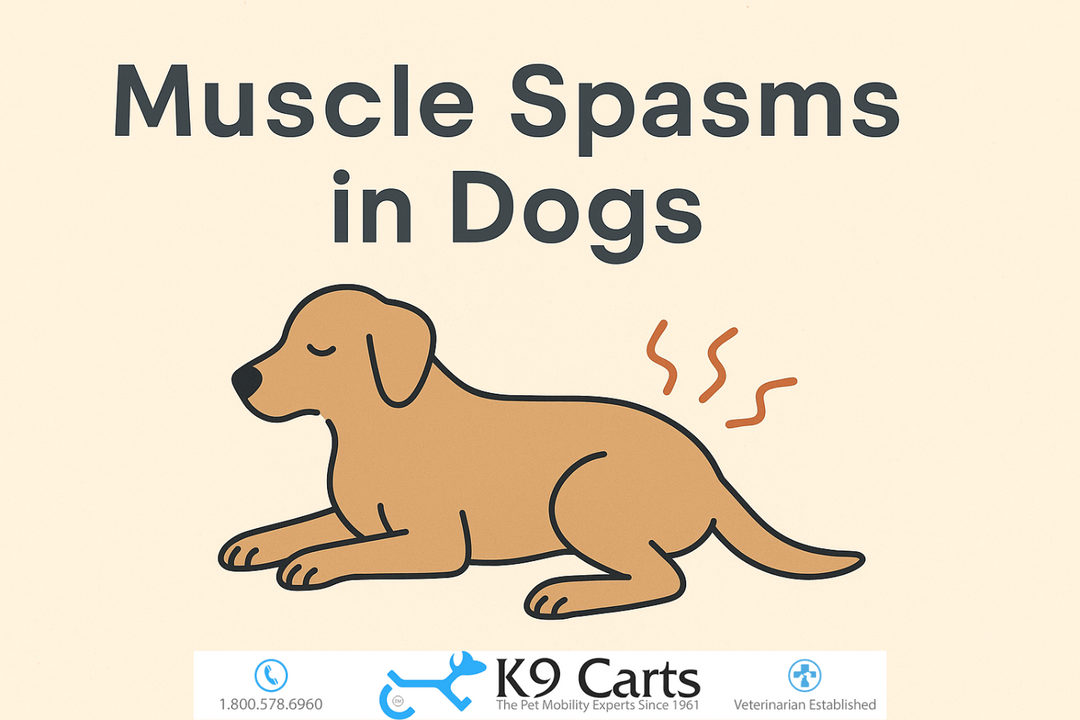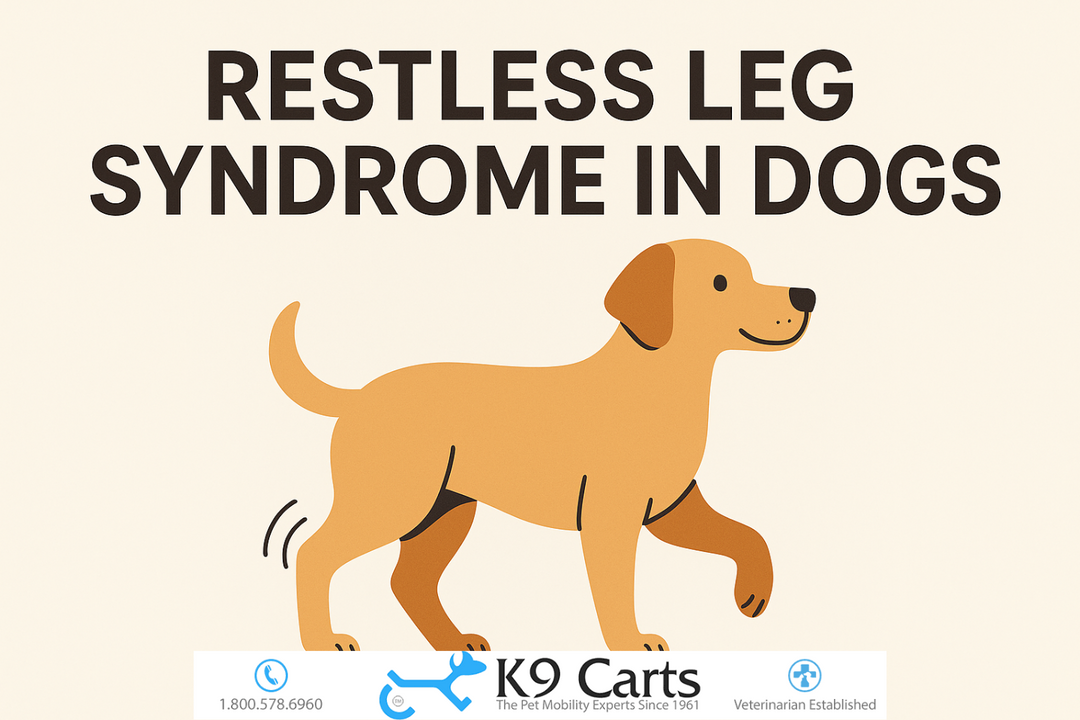What Is Hygroma in Dogs? Causes, Symptoms, and Treatment of Fluid-Filled Lump on Your Dog's Leg or Elbow

If you've noticed a soft, round lump on your dog’s elbow or leg, especially where the bone sticks out, your dog might have a hygroma. This can worry any pet parent, but it's more common than you may think.
A hygroma usually forms when there’s repeated pressure or friction on a bony part of the body. While it's not always painful at first, if left untreated, it can grow, harden, or even get infected.
On this page, we’ll go over what a hygroma is, what causes it, how to recognize one, and what you can do to treat or prevent it.
What Is a Hygroma?
A hygroma is a fluid-filled swelling that shows up over a pressure point, usually where there’s very little fat or muscle to cushion the bone. You’ll often find it on the elbows, especially in big dogs, but it can also form on the hips, hocks (ankles), or other bony areas.
The lump starts out soft and may not bother your dog at all. Over time, if the pressure continues, the body builds up a fluid pocket to protect the area. In some cases, the lump can get firm or even infected, which can cause pain or skin problems.
What Causes a Hygroma in Dogs?
Repeated Pressure on Hard Surfaces
The most common cause is when your dog lies down on hard flooring for long periods. The constant pressure on their elbow or hip can break down the tissue and lead to fluid buildup.
This is especially common in dogs that:
-
Sleep on tile, hardwood, or concrete floors
-
Don’t move around much
-
Spend a lot of time lying down due to illness or injury
Body Size and Shape
Large or giant breeds are more likely to develop hygromas. This includes dogs like Great Danes, Mastiffs, Labrador Retrievers, and German Shepherds. Their body weight puts more pressure on joints when they lie down.
Dogs with thin coats and little body fat are also more at risk because there’s less padding between their bones and the ground.
Limited Mobility
Dogs with joint problems, arthritis, or paralysis may not move enough. If a dog lies on the same side too long or can’t change positions easily, pressure builds up in those areas. These dogs are much more likely to develop hygromas, especially if they’re recovering from surgery or have mobility issues.
What Are Dog Hygroma Symptoms to Watch For?
Early Signs
At first, a hygroma might look like:
-
A soft, squishy lump on the elbow or leg
-
The size of a grape or plum
-
No redness or pain
-
No change in your dog’s walking or behavior
Your dog may not seem bothered by it at all. Many owners notice it by accident while petting or grooming.
When It Gets Worse
If the hygroma continues to grow or gets irritated, you may notice:
-
The lump becomes firm or larger
-
The skin becomes red or sore
-
Your dog starts licking or chewing at the area
-
The lump opens and leaks fluid or pus
These are signs of infection and need to be treated right away. Infections can lead to open wounds or abscesses that are harder to heal.
How Are Dog Hygromas Diagnosed?
Most of the time, a vet can tell it’s a hygroma just by looking at it and feeling it. They’ll check if it’s soft or firm and see if it causes pain.
In some cases, they may recommend:
-
X-rays, to rule out bone injury or joint problems
-
Fine needle aspiration, to draw out fluid and check for infection
-
Ultrasound, to look at the inside of the lump
If there’s any doubt, a biopsy might be needed to make sure it’s not a tumor or another type of growth.
How Are Hydromas Treated?
Home Care and Padding
If the hygroma is small and not infected, the best first step is to take pressure off the area. This lets the body reabsorb the fluid over time.
Simple steps at home include:
-
Give your dog thick, soft bedding
-
Use foam mats or rugs on hard floors
-
Encourage your dog to switch sides when lying down
-
Use padded elbow sleeves or wraps
These changes can make a big difference. Many hygromas shrink or go away with proper rest and padding.
Veterinary Treatments
If the lump is large, firm, or infected, your vet may suggest:
-
Draining the fluid with a needle (though the fluid can come back)
-
Using antibiotics if there's infection
-
Anti-inflammatory medication to reduce swelling
-
Cold laser therapy to improve healing
Surgery is usually a last resort. It’s only used when other treatments fail or the skin is badly damaged. Surgical removal has risks, especially in areas with poor blood flow, so it's not done unless absolutely necessary.
How Can Hygromas Be Prevented?
Preventing a hygroma is easier than treating one. If your dog is large, older, or less mobile, it’s important to reduce pressure on their joints before any swelling starts.
Here’s what you can do:
-
Give your dog a soft orthopedic bed with good support
-
Avoid bare floors – use rugs or soft tiles
-
Keep your dog at a healthy weight
-
Check elbows, hips, and ankles often for swelling
-
Use elbow or hock pads for extra protection
-
Help your dog change positions often if they’re not mobile
How Mobility Aids Like Wheelchairs Can Help
Some dogs, especially those with joint disease, back injuries, or paralysis, can’t move enough to protect their pressure points. These dogs spend more time lying down, often in the same spot. That puts them at high risk for hygromas.
In cases like this, a well-fitted wheelchair can make a big difference.
K9 Carts makes custom-built dog wheelchairs that are made in the U.S. and designed by orthopedic experts. These chairs are made to support your dog’s body in a natural position. They reduce pressure on elbows, hips, and hocks by lifting part of the dog’s weight.
Using a cart helps your dog stay active, change position more often, and rest without putting pressure on the same joint all day. This doesn’t just prevent hygromas – it also supports better recovery and quality of life.
Closing Thoughts on Canine Hygromas
Hygromas are common, especially in bigger dogs or dogs with mobility issues. The good news is that they’re often easy to treat and even easier to prevent with a little care. Soft bedding, joint protection, and mobility support go a long way.
If your dog has trouble getting around or can’t move freely, it might be time to consider a custom mobility solution. At K9 Carts, we help dogs regain comfort and freedom with wheelchairs designed to meet their exact needs.
Your dog’s health and comfort matter. And with the right care, hygromas don’t have to be part of the picture.





